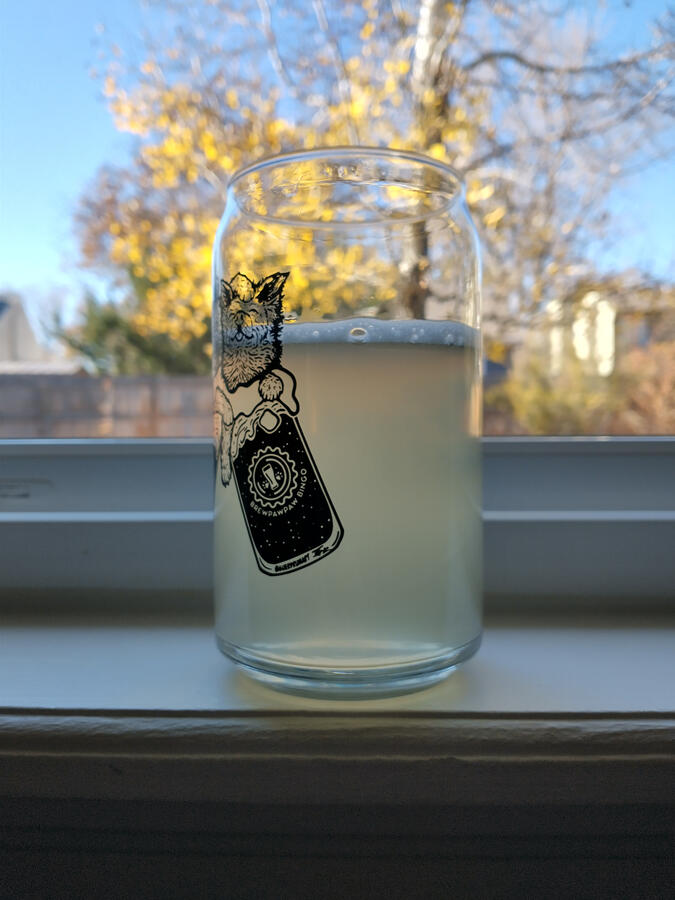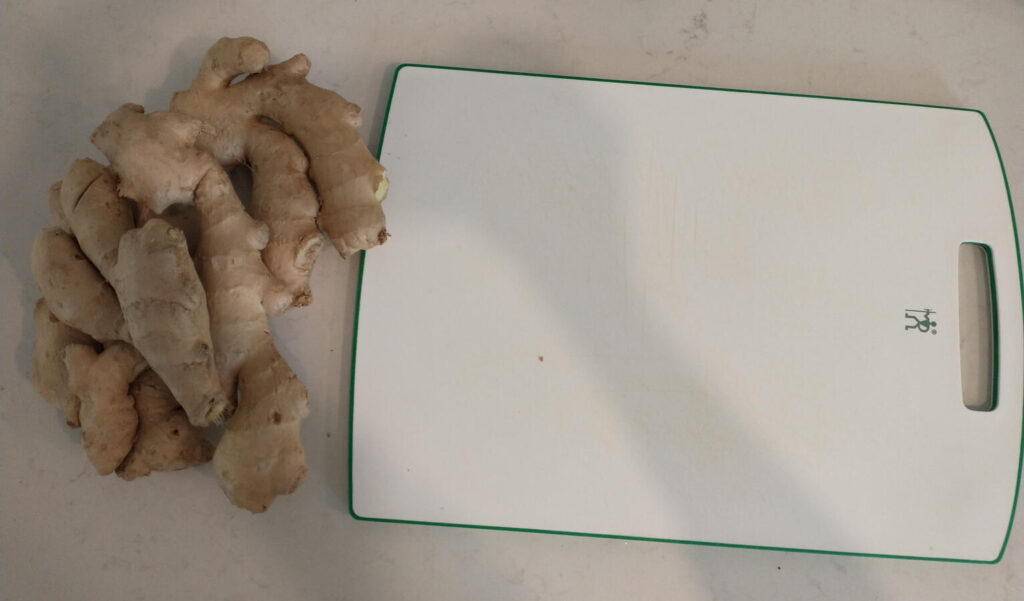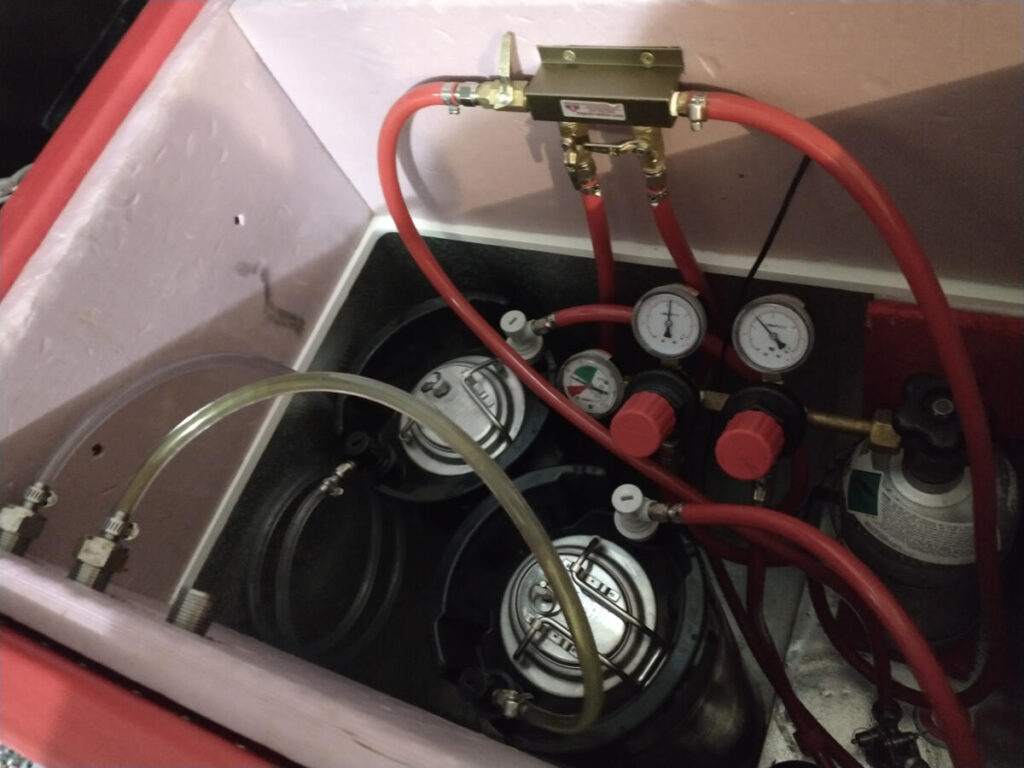We made a simple ginger ale earlier in the summer, but we had a ginger ale at Busey Brews in Nederland that inspired us to make a spicier ginger ale for the winter with cinnamon and anise. It’s delicious, and it has a spicy kick that goes great in a cocktail.
Winter Spice Ginger Ale Recipe
In addition to the ingredients, you will need brewing sanitizer, a keg, brewing equipment, a stock pot that can easily hold the liquid volume, and a cheesecloth bag to hold the stuff while it steeps.
I didn’t specifically include sanitizing in the instructions, but it’s extremely important to sanitize anything that comes in contact with the brew, either by boiling it (like the pot will be sanitized) or with a sanitizing solution. This is 90% of brewing, and it’s reflexive if you’re already a germophobe.
I did a few of these things differently as a test, like using the cheesecloth bag as a strainer during kegging instead of as a big tea bag, but I would highly recommend doing it this way instead of what I tried. I will be using this recipe as-written in the future.
Ingredients
Makes 5 gallons of ginger ale. If you plan to make it super fizzy, you probably need to scale the recipe up to account for the waste when you rack it.
- About 2 pounds of fresh ginger, peeled and sliced thin
- 2 1/2 pounds of white sugar
- 4 lemons
- 8-10 cinnamon sticks
- 2-3 whole star anise
Instructions
- Bring 5 gallons of water to a boil in a big stock pot.
- Clean and peel the ginger root, then slice it into thin discs. Put the ginger, cinnamon sticks, and star anise in a cheesecloth bag.
- Juice the lemons, then put the peels in the cheesecloth bag.
I didn’t do this for the light and refreshing ginger ale, but this one should be wintery and spicy, and I’d like some of that lemon peel oil in there. You could also peel the lemons and then juice them later, but this is probably just as good. - Once the water is boiling, put the cheesecloth bag in the pot to steep for about an hour.
- Taste it to make sure it is spicy enough
- Juice the lemons and pour the juice in, ideally through the cheesecloth bag to filter out any pulp.
- Pull the bag out and mix in the sugar. Soda sweetness is a personal preference, so make sure to taste it.
- Cool the pot down somehow. It doesn’t need to be room-temperature, it just needs to be cold enough that you don’t melt your plastic equipment. No one wants microplastics in their ginger ale. If you have a wort chiller, that’s cool ;), otherwise, I usually just put my pot in the sink in a few inches of water and ice packs, and replace that water when it gets hot.
- Rack it, if you feel like it.
The key to fizzy drinks is eliminating nucleation surfaces. Racking is where you wait for the suspended particles to sink to the bottom, and then you siphon off the top liquid and avoid the sludge at the bottom. This is really effective at getting rid of suspended particles, but it leaves behind usually a pint or two of waste liquid.
In this case, the waste liquid is basically just cloudy sweet ginger tea, so just drink it, it’ll taste good.
I want my ginger ale to be about as sparkly as champagne, and I have decided I don’t really need to rack it before kegging to accomplish that. - Keg it.
I always start by filling my keg to the brim with StarSan sanitizer, then hooking the keg up to a CO2 tank and pushing all the sanitizer out of the keg. This will both sanitize the inside of the keg and replace the air in it with CO2, both of which will extend the shelf life of the ginger ale. If you are not careful, you will put the volume of air in the siphon hoses into the keg when you siphon the liquid, but I have never cared about that.
- Pressurize it.
I always slow-carbonate my brews. I know that I could quick-carb them, but it will take a day or two for my refrigerator to thoroughly cool the ginger ale anyway, so I will just set the CO2 pressure at 30-35 PSI for about a week, shaking it a couple times in the first few days. - Serve it.
Once the carbonation is done, you can drop the pressure to a serving pressure like 10-15 PSI and start serving.




